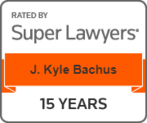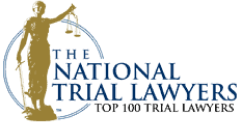Birth Injury: Cerebral Palsy
Birth injury cerebral palsy can occur when you or your child did not receive proper medical care before, during, or after their birth. At Bachus & Schanker, we believe you should not have to suffer needlessly because of the poor medical care you and your baby received.
If you suspect your baby’s cerebral palsy resulted from medical negligence, we highly encourage you to speak today to one of our cerebral palsy birth injury lawyers. We offer a free consultation and work on a contingency fee basis should you have grounds to file an injury claim.
Bachus & Schanker Wins – Over $1 Billion Recovered
- What is cerebral palsy?
- What are the causes of cerebral palsy?
- What are the different types of cerebral palsy?
- What are the symptoms of cerebral palsy?
- What processes are involved in cerebral palsy screening and diagnosis?
- How is cerebral palsy treated?
- Is cerebral palsy preventable?
- How long do I have to file a birth injury claim?
- How do I prove medical negligence in a birth injury lawsuit?
- How do I gather evidence to support my birth injury lawsuit?
- When should I speak to a cerebral palsy lawyer?
- Visit Our Office Locations Across Colorado & Beyond
- You Deserve Fair Compensation

What is cerebral palsy?
Cerebral palsy is a type of brain disorder that affects the signals sent between the brain and the muscles through the central nervous system. This disorder develops as the result of some form of brain damage either before or during birth.
The disorder will vary from one child to another, depending on the region of the brain that was damaged. The symptoms and the severity of the condition will differ for each child. Furthermore, once the brain is damaged, the disorder is not curable.
Cerebral palsy will not worsen as your child grows. However, your child could experience other health issues and complications as a result of their condition. Certain medications, surgical procedures, and therapy can improve the quality of life for your child.
What are the causes of cerebral palsy?
The primary cause of cerebral palsy is related to brain damage before, during, or after birth. It is also caused by the abnormal development of the brain during pregnancy. Post-birth cerebral palsy occurs when the infant sustains brain damage within the first few years of their life while their brain is still developing.
Abnormal development or brain damage can occur in different parts of the brain. This will determine the severity of cerebral palsy in your child, depending on the region damaged.
- Cerebellum – Damage in this region can cause problems with coordination and balance.
- Motor Cortex – Damage in this region can make muscles rigid and stiff because of increased muscle tone.
- Basal Ganglia – Damage to this region can create issues with mobility as muscle tone varies from being too tight to too loose.
In addition, abnormal development or brain damage can occur for the following reasons:
- Head trauma or brain injury before, during, or post-birth.
- Lack of oxygen during birth.
- Premature birth with low birth weight.
- Giving birth to multiple babies.
- Experiencing infections and medical conditions during pregnancy.
- The baby is born with jaundice, or jaundice goes untreated and advances into kernicterus.
- The baby experiences an infection that causes brain damage.
- Complications during birth that disrupt the oxygen supply to the infant.
Sometimes the head trauma or brain injury that causes cerebral palsy results from medical negligence. Medical negligence is when you and your baby do not receive an acceptable standard of care.
It can also occur when a healthcare professional or medical team fails to act in a specific manner that could have prevented the head trauma that resulted in a catastrophic birth injury.
What are the different types of cerebral palsy?
There are four different types of cerebral palsy that fall into one of two categories: congenital cerebral palsy and acquired cerebral palsy. Congenital cerebral palsy is when the abnormality or brain damage occurs before or during birth. Acquired cerebral palsy is when the abnormality or brain damage occurs after birth.
Ataxic Cerebral Palsy
This type of cerebral palsy is the rarest. It affects coordination and balance. Infants may have issues walking, balancing, and movements that require control. Ataxic cerebral palsy is the result of permanent damage to the cerebellum.
Spastic Cerebral Palsy
This type of cerebral palsy is the most common. It causes increased muscle tone and occurs when there is an abnormality or damage to the motor cortex. The increased muscle tone makes it difficult to control arms, legs, and other parts of the body.
The region of the body where spastic cerebral palsy occurs is further divided into:
- Spastic Quadriplegia – The cerebral palsy affects the entire body below the head.
- Spastic Hemiplegia – Only one side of the child’s body is impacted by cerebral palsy.
- Spastic Diplegia – Only the lower limbs are affected by the cerebral palsy, which can make it difficult for infants to learn to crawl and walk.
Dyskinetic Cerebral Palsy
Children with dyskinetic cerebral palsy essentially have no control over their movements and coordination as their muscle tone alternates between tight and relaxed states. As a result, the movements can seem jerky and rapid or slow. It is caused due to abnormalities or damage to the basal ganglia.
Mixed Cerebral Palsy
Mixed cerebral palsy is when two or three areas of the brain develop abnormally or are damaged. The most common type of mixed cerebral palsy is when the basal ganglia and motor cortex have abnormalities or are damaged.
What are the symptoms of cerebral palsy?
It is essential to remember cerebral palsy symptoms are not always noticeable following birth. Sometimes, they may not become apparent until several months or up to three years later. The most common indication your child has cerebral palsy is when they are not reaching developmental milestones – physically or neurologically – as quickly as other children.
Physical Symptoms
Some of the more common physical symptoms you can look for in your child include the following:
- They favor one side of their body over the other.
- The muscles on one side of the body seem tense and tight.
- One or both of their hands remain in a clenched fist position and do not seem to relax.
- They have difficulties swallowing, eating, drinking, or sucking.
- They have a lack of coordination.
- They walk on the tips of their toes.
- They experience involuntary body movements, shaking, or tremors.
Neurological Symptoms
Neurological symptoms related to cerebral palsy have to do with your child’s cognitive development. They could include signs of not developing as fast, learning disabilities, or perceiving pain when there is no physical pain.
Speech-Related Symptoms
Another common symptom that could indicate your child has cerebral palsy is when their speech development does not occur as expected. They may also have issues forming speech patterns, speak in a nasally or monotone voice, or have a constant hoarse voice.
The CDC also recommends that parents look for early signs of cerebral palsy in their infants by looking for specific symptoms based on their age.
What processes are involved in cerebral palsy screening and diagnosis?
Should you suspect your child has cerebral palsy, it is crucial that their pediatrician screen and evaluate your child using different methods. Screening processes can involve evaluating and testing your child to determine if there are any developmental issues.
In addition, medical evaluations and specific tests can be performed to determine whether there are any brain abnormalities or damages. For example, EEGs, ultrasounds, and MRIs are common diagnostic tests that may be used. Your child’s pediatrician could also conduct speech, vision, and hearing tests.
How is cerebral palsy treated?
Even though there is no known cure for cerebral palsy, several effective treatment methods can help manage the condition and help your child thrive, including medications, different therapies, and surgery.
Medications are prescribed when the child is experiencing seizures or has spastic cerebral palsy. Speech therapy, physical therapy, aquatic therapy, and occupational therapy are all useful in improving a child’s quality of life. In addition, special types of medical braces can be used to address mobility issues.
Surgical options are often reserved as a last-resort form of treatment. Surgery could be beneficial for feet, legs, hips, hands, arms, and spinal problems when other forms of treatment have not been effective.
Is cerebral palsy preventable?
While cerebral palsy is not a preventable disorder, there are several things that doctors and expectant mothers can do to reduce risks. Maintaining healthy habits throughout pregnancy, keeping up on doctor’s visits, and avoiding putting yourself in potentially risky situations can benefit your unborn child.
You may also want to consider an Rh (rhesus) factor test. Rh is a protein that is found in red blood cells. Most people have Rh, while others do not. Not having the protein could have effects on your pregnancy. Special care is required to reduce the risk of developing cerebral palsy.
During labor, ensure your and your baby’s conditions are constantly monitored. After birth, you want your baby treated if they are diagnosed with jaundice. Furthermore, keeping up with all pediatrician visits and immunizations is vital. Lastly, childproof your house and take steps to reduce the risk of head injury to your baby.
How long do I have to file a birth injury claim?
If you suspect your child’s cerebral palsy resulted from medical malpractice, you must speak with a brain injury lawyer as soon as possible. Here in Colorado, the statute of limitations to file a cerebral palsy birth injury claim is three years.
How do I prove medical negligence in a birth injury lawsuit?
Proving medical negligence in a birth injury lawsuit requires the presence of both negligence and a resulting preventable injury that occurred before, during, or after birth. To establish negligence, you and your cerebral palsy lawyer will need to provide evidence that you did not receive a proper standard of care or that the actions or inactions of healthcare providers resulted in the birth injury to your child.
If your child develops cerebral palsy, but there was no negligence, or if there was negligence and your child does not develop cerebral palsy, then your injury claim cannot be filed as medical malpractice.
How do I gather evidence to support my birth injury lawsuit?
You should obtain copies of all your medical records related to your care before, during, and after your child’s birth. You will also need medical records for your baby and the care they have received.
Your medical malpractice lawyer will use the medical records and obtain additional evidence to build your case, such as reviewing the employment history of your medical professionals, gathering witness statements, and consulting with independent medical experts.
When should I speak to a cerebral palsy lawyer?

When you suspect a negligent birth injury caused cerebral palsy in your child, you should speak with a cerebral palsy lawyer. At Bachus & Schanker, there are never any upfront fees, no out-of-pocket expenses, or risks you incur by obtaining legal advice in Colorado.
In addition, our medical negligence attorneys offer a free consultation to determine if there are sufficient grounds to proceed with a medical malpractice lawsuit against the responsible party.
Sources:
What Causes Cerebral Palsy? (2021).
CDC’s Developmental Milestones. (2022).
What Is Cerebral Palsy. (2022).
Screening and Diagnosis of Cerebral Palsy. (2022).
C.R.S. 13-80-102.5 (2022).
Visit Our Office Locations Across Colorado & Beyond
Serving Clients Nationwide
You Deserve Fair Compensation
Don’t let the insurance companies intimidate you into accepting less than you deserve. We’re ready to fight for you.







